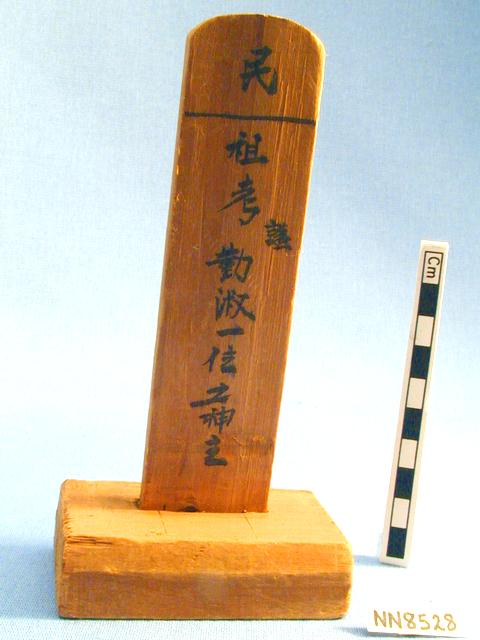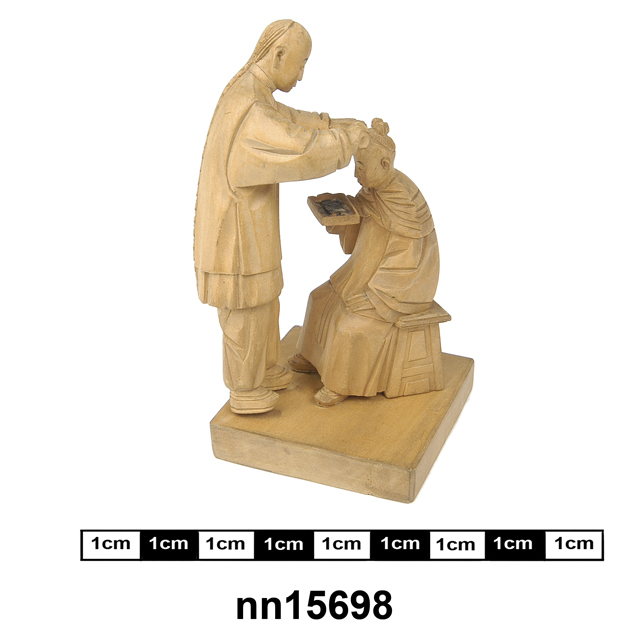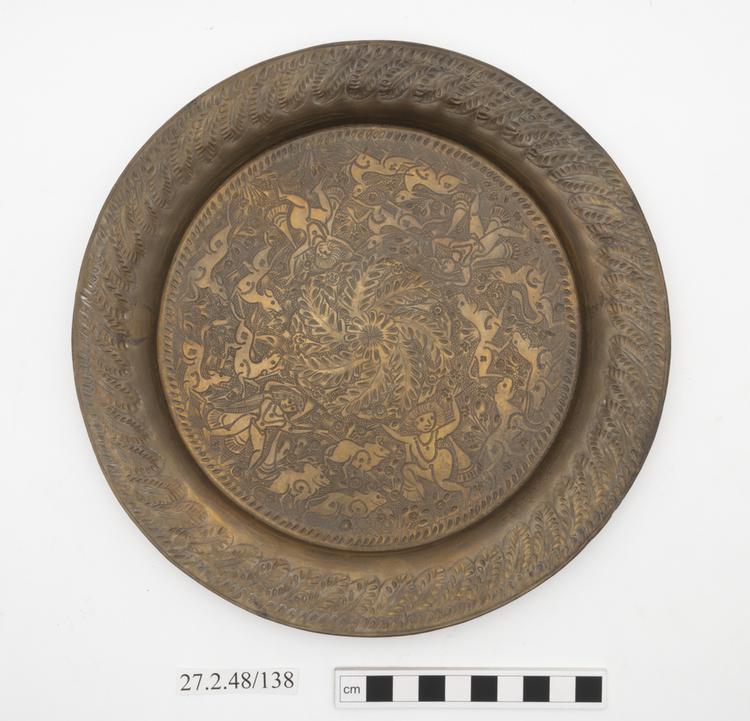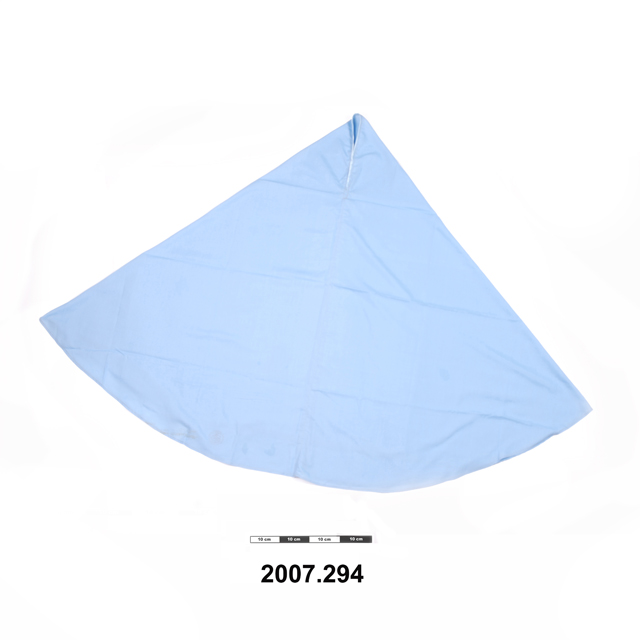
Ancestor tablet made from natural wood with black painted Chinese characters. The 11 characters inscribed on the tablet read: 民 祖考 謚 勤淑一位之神主, which roughly means ‘Shrine of Ching-shu’. The first character民 ‘min’ has two kinds of meaning. It may refer to the time the person lived-the Republican period - (to differentiate the deceased from ancestors of the Qing dynasty), or it might be intended to indicate the identity of the person-a normal citizen (to differentiate the person from ancestors who are civil officials or nobles). The next two characters祖考 ‘zu kao’ are an honorific title referring to an ancestor who died under the age of 60. (If the person lives longer than 60 years, then another term 顯考 ‘ xian kao’ should be used.) The next letter 諡 ‘shi’ is the Chinese posthumous term, for the name published after death. Posthumous names can be terms of praise (in Chinese: 褒字) or deprecations (in Chinese: 貶字). There are more praises than deprecations, so posthumous names are also commonly called respectful names (in Chinese: 尊號 ‘zun hao’). It is used in three main situations: firstly, it is commonly used when naming royalty of China, Korea, Vietnam, and Japan; secondly, they were also given to honour lifetime accomplishments of many people who did not have hereditary titles in China and Vietnam, for example to successful courtiers; lastly, sometimes a person is given a posthumous name not by the court, but by his own family or disciples. Such names are private posthumous names (in Chinese: 私諡, ‘si shi’).The posthumous name of this person is a private one, which was probably given by his or her family. It reads 勤淑 ‘qin shu’, which means ‘diligent and virtuous’. This two words are both adjectives commonly used to describe women. Also, it is rare to have the posthumous name on a tablet, because in the traditional Chinese ritual, only the ancestor’s original name should be put on. This suggests that this might be a tablet from a Hakka family, since only the Hakka people have this kind of tradition to use the posthumous name. The word勤 ‘qin’ is also widely used in Hakka society and on their ancestor tablets, because this word can best describe their chief virtue-diligence. Considering the indications above, this might be the tablet of a Hakka women who passed away below the age of 60 years.
Chinese people believe that once a person dies the soul of the person continues to exist. Each person's soul is thought to exist in the grave as well as in an ancestral tablet. Originally ancestors were remembered by carrying out sacrifices. Through these acts of worship, families believed their ancestors would bless and protect them. If the family failed to honour their ancestors by neglecting them, it was thought that the ancestors would bring their living relatives "misfortunes and calamity". Many Chinese families perform the practice of ancestor worship still today. There is a room or section of the house where the ancestor shrine is located. The shrine holds the ancestral tablet, which is a narrow wooden tablet about twelve inches tall with the name of the relative written on it. Incense and daily offerings are placed in front of the tablet in honour of the ancestor.
































































































































































































































































































































































































































































































































